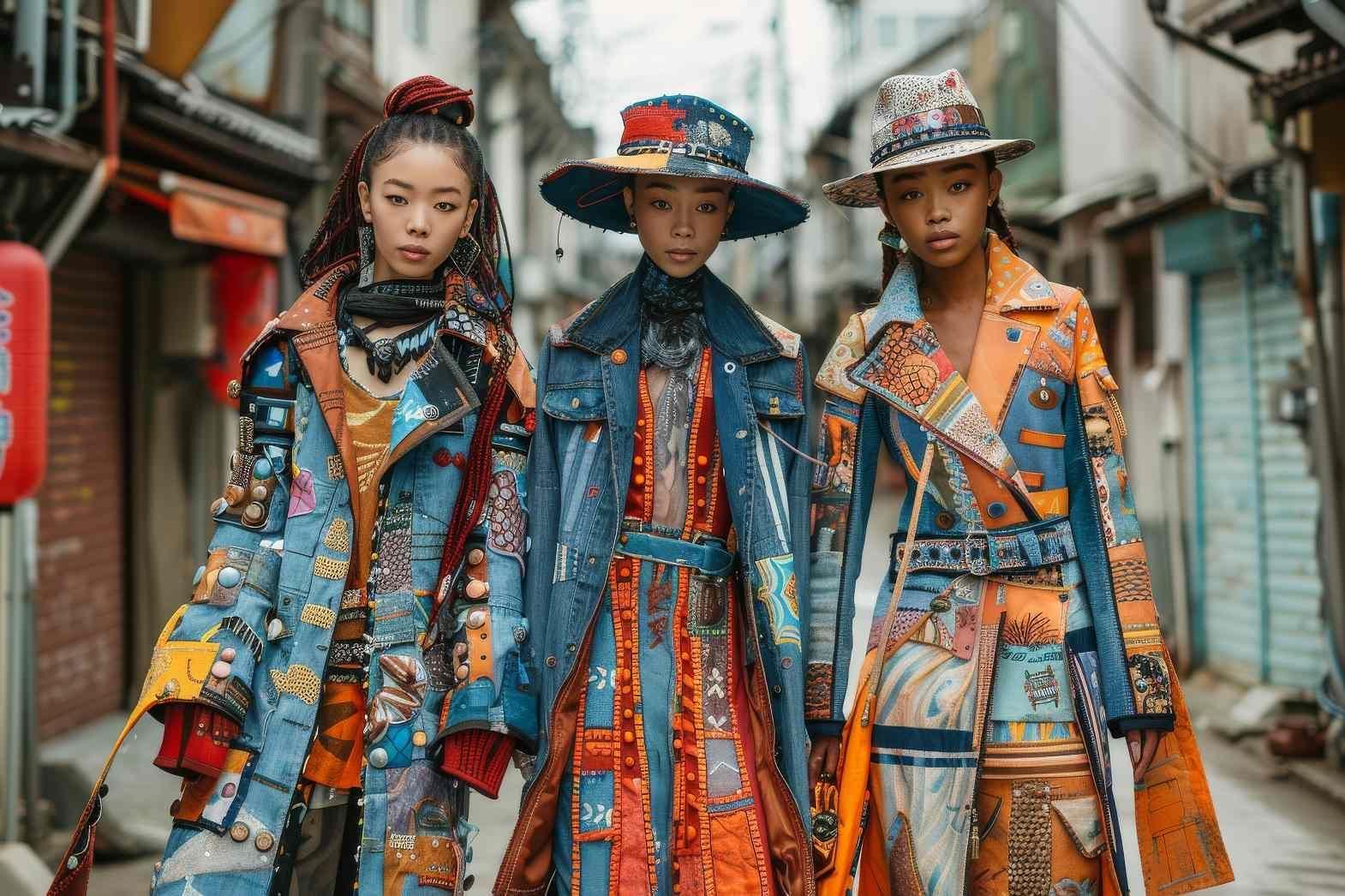Patchwork involves multiple panels of patterned fabric in the same ensemble. Patchwork is more of a print trend than a fabric trend. The unique manner of placing the printed fabrics in a patchwork design imparts a unique identity to the outfit. Patchwork is not to be confused with print-on-print. Though, there is not much difference between the patchwork and print-on-print, as both offer the wearer a canvas of colors and prints.
Nevertheless, unlike layered prints, patchwork prints are cleverly and creatively created as one piece, by means of stitching several pieces of print fabric together. At a glance, it might appear as unmatched pieces of fabric, but in reality, a lot of thought goes into assembling different pieces of fabric and turning them into an elegant garb, which is styled to look that way.
It is such a rational idea to create new pieces of clothing out of old, torn, or unwanted material. Patchwork is encouraging recycling in a fashionable way. In fact, patchwork was invented for the purpose of utilizing every tiny bit of a cloth to the maximum. In America alone, 11.1 million tonnes of textiles end up in landfills each year. With patchwork in vogue again cities are collecting even the worn, torn and tattered clothing. In the UK, it is estimated that more than 1 million tonnes of textiles are thrown away every year and at least 50 percent of the textiles thrown away are recyclable.
Patchwork is an art that encourages recycling and thus, provides numerous environment benefits. By re-using existing fibers and textiles, there is no need to make these textiles from raw materials (such as cotton, wool, and synthetic fibers). This saves on the energy used and pollution caused during manufacturing processes like dying, washing, and scouring.
Patchwork can be given any shape, as there are no strict rules concerning patchwork. Even as the fashion critics find patchwork prints aimless and a messy interpretation of the print trend, still, designers around the globe have not only presented patchwork but have also won applause for the same. In the last three years, patchwork has marched into the fashion world, winning hearts in endless catwalks and brands, with multi-material clothes using tartan, tweed, and even leather. Recently, in 2013, patchwork designs were showcased in the London Fashion Week.
Brands like D&G have showcased patchwork prints with square patterned wall tiles giving gypsy vibe and patchwork prints proved to be a continual theme since then for several designing houses. Tribal print patchwork alongside geometrical prints is also in vogue. The options are near-on limitless and one can turn to metallic studs, sheer ruffles, mesh, embroidery, pleats and leather to create a single outfit.
The humble history of patchwork that is credited to Egypt in 3400 BC has come a long way since then. It was during the period of American colonisation with good populations of Britain, the Netherlands, Germany and France that patchwork saw its greatest expansion. The idea of using patches in clothing that began out of necessity, when housewives used pieces of clothes to make simple repairs of worn-out clothes, can now be spotted on the ramp. The use of different patches of cloth on the same garment created accidental, multi-colour, and sometimes wild designs.
Patchwork also differs in different regions. Like the Hawaiian patchwork involves using two or more overlaid fabrics of the same size. Hawaiian designs are cut out of the first piece, which is then fixed over the lower. In the Indian molas technique, various layers of dazzling coloured cloth are used. Patchwork was a practice that returned to fashion in the Victorian era in the nineteenth century when carriages were adorned with brocaded silk and velvet fabrics.
Patchwork has been often associated to quilts and until the twentieth century. It was the year 1911 that witnessed the initial work of abstract applied art, a handmade patchwork bedspread by Sonia Delaunay, an artist interested in graphics, painting, furnishing and fashion. But real patchwork art in fashion made its first appearance with Roberto Cavalli, who in the 1970s invented and patented an innovative technique for printing on leather.
1970 was also known for patchwork thanks to the appearance of Missoni and the brand's patch style. The creation of patchwork involved a simpler process of printing patch designs onto fabrics. Patchwork made another comeback in the 1990s with grunge, which focused on combinations of retro clothes. It reappeared in the new millennium in 2005 and since then it continues to make a mark in the fashion industry.
Patchwork's popularity has escalated and it has featured in the SS13 and AW13 international catwalk shows. There is no shortage of products out there that really excel at creating the perfect patchwork. There are skirts, casual shirts, hats, ties, pants, dresses, coats, jumpsuits, shorts, scarves, stoles and denims with patchwork that have made it to the display windows of designer stores. Apart from quilts, patchwork is also being used in tapestry, curtains, sofa cloth and bedcovers.
The patchwork look is one that makes head turns. It is a trend that gives freedom to the designers and helps the wearer make a fashion statement. From variety of colours to several fabrics at once or from combination of bright and dull colours to amalgamation of different prints, patchwork is in vogue and is likely to make it over and over again to the ramps.
References:
1. Vogue.it
2. Fashionising.com
3. Ethicalfashionforum.com








Comments